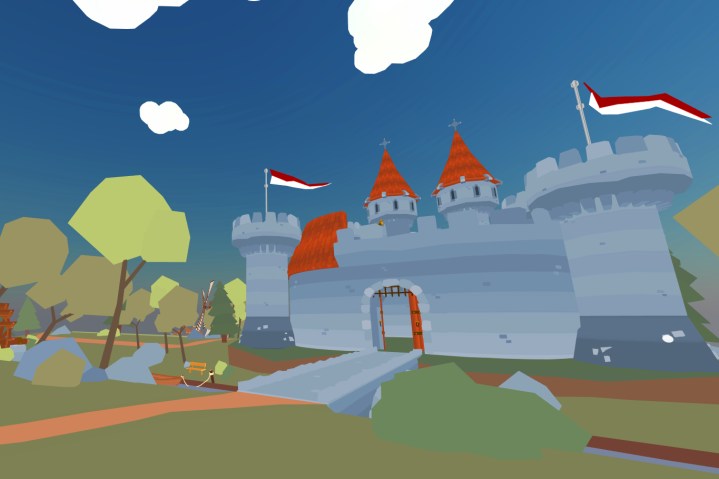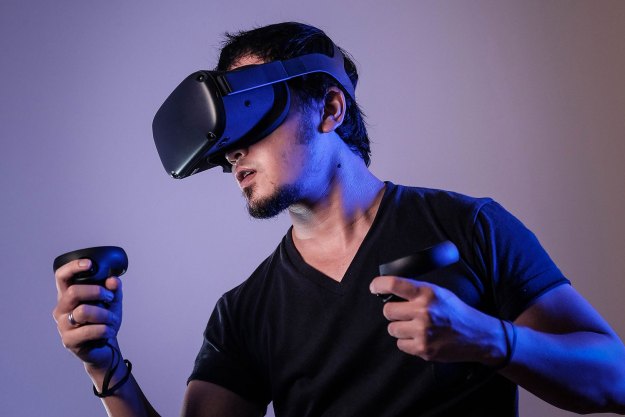
On Thursday, April 26, Mozilla launched an early preview of a social experiment for mixed reality headsets called Hubs. It’s based on WebVR, a web-based platform enabling virtual reality experiences within a browser without the need for additional software, plug-ins, or an app store. Hub supposedly works in all browsers and with every mixed reality headset now available ranging from the HTC Vive to Google Cardboard.
“You can even use your desktop or mobile phone if you don’t have access to any VR hardware. Everyone can come together and communicate with each other in this online social space,” Mozilla states. “The experience will progressively scale to make use of the hardware that is available to you.”
So what is Hubs exactly? It’s a private room for hanging out with your friends. To start, simply choose one of three scenes: A living room, a medieval fantasy setting, or a terrace overlooking a deep rocky pool of water. After that, you choose a display name, an avatar, and grant Hubs access to your microphone. A share button generates a link so you can invite others to your virtual space.
That is just for accessing a private room using a PC without a headset. We took the medieval setting for a spin with the Samsung Gear VR, and the only difference was a prompt to select the headset from a list: Enter on a phone, enter in VR (Cardboard), enter in Gear VR, or enter on Daydream using Google Chrome. After that, we jumped into Mozilla’s virtual space.
In this setting, you will find a cottage occupied by a “frozen” farmer, meaning he appears to be plowing but is frozen in place. A pathway stretches in parallel with the cottage to lead you past a river house with a spinning wheel to a bridge manned by a frozen fisherman. The path continues across the bridge and into a small forest (with frozen deer), or into a castle where you can climb the steps and fondle a toy duck on the second floor.
That said, the visuals are rather basic, sporting flat colors save for a little detail in the castle, rooftops, and wooden doors. The only moving components are a windmill, the river house wheel, and the castle’s two flags. If the clouds above are in motion, then they’re moving so slow we can’t see any change in the sky.
The whole point of this experiment is not to dive deep into an immersive experience, but to hang out with friends in a private, virtual environment. Based on what we have seen thus far, the only purpose is to chat: There are no other tools for interaction such as games, objects to throw, and areas to really explore.
But don’t worry, this is just a start. Mozilla will release tools and new features in the coming months to scale up the experience. The goal includes custom spaces, additional avatar options, integration with existing communication tools, and more.
Editors' Recommendations
- This new VR headset beats the Vision Pro in one key way and is half the price
- What’s behind customers returning their Vision Pro headsets?
- Disney just reinvented the VR treadmill, and it looks amazing
- The Apple Vision Pro has given VR its iPhone moment
- Apple’s VR headset has no killer app, prominent leaker warns


